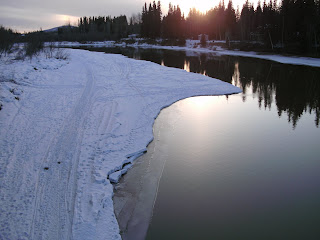Having said all that and for the sake of a grade I will comment on the required 5 blogs!
I really enjoyed the spectacula r, realistic photos and the clear and concise writing in Woven Ideas and Practices. How in the world did you get your photos so clear? You had lots of links and I really liked your color choice. Of course being an Art teacher that explains alot! You sound like a fascinating person, just like all the other people in our class. It has been a pleasure to read your blog!
r, realistic photos and the clear and concise writing in Woven Ideas and Practices. How in the world did you get your photos so clear? You had lots of links and I really liked your color choice. Of course being an Art teacher that explains alot! You sound like a fascinating person, just like all the other people in our class. It has been a pleasure to read your blog!
Kobuk River Valley People ~ What was the content warning for? I felt nervous!! Your paper nine was my favorite because I learned alot about the village of Kivlina. I really enjoy reading about real places the most especially since I am actually in Alaska now!! The photos were amazing of the houses so close to that steep edge!!
BRENDASEXPLOREALASKA ~ I think the black background for the photos was awesome but it was too hard on my eyes to read the words. I have to admire your guption for having 3 kids especially a 4 year old with you!! I have seen photos of Sitka and it appears to be very beautiful!! I have a friend who comes out there for several weeks at a time. I really loved the old photo of the Eskimos building an igloo and the fur baby carrier on the snow. Great blog!
AlaskaZgal ~ I think the polka dots are really neat and different! What made you choose your blog name that was cool too! I really could relate about how we are all in this together and therefore we are all responsible for getting us out of this mess. I read with interest about your visit and subsequent observations on the current state of affairs in the lower 48! Beautiful blog! Liked the older photo of the Natives as well!
DavesExploreAlaska ~ I wanted to check out one of the guy's blogs and I was duely impressed! I think you must have come over to my blog and killed my bear! My gosh I have never seen a bear so big in my life!! I would love to know what you did with the whole thing? Did you make something from the skin? Is the head mounted on your wall? What size gun did it take to kill that?!?!? Oh yes, and it was way cool how you got the background to stay stationary and the reading part to scroll!! I enjoyed watching the videos as well! Super job!





 I am currently suffering the effects of spring break up here in Fairbanks!! I must admit this is the worst part of the year so far! All the breathtakingly beautiful white snow that was part of the albedo effect has now changed to ugly black 'glaciers in
I am currently suffering the effects of spring break up here in Fairbanks!! I must admit this is the worst part of the year so far! All the breathtakingly beautiful white snow that was part of the albedo effect has now changed to ugly black 'glaciers in 









 I read with interest the Indigenous Peoples’ Global Summit on Climate Change and while I wholeheartedly support the basic premise however, some "calls for action" grabbed my attention more than others. I don't understand why the natives would consider "clean coal" as having a negative impact as they assert in 6. We challenge States to abandon false solutions to climate change that negatively impact Indigenous Peoples’ rights, lands, air, oceans, forests, territories and waters. These include nuclear energy, large-scale dams,
I read with interest the Indigenous Peoples’ Global Summit on Climate Change and while I wholeheartedly support the basic premise however, some "calls for action" grabbed my attention more than others. I don't understand why the natives would consider "clean coal" as having a negative impact as they assert in 6. We challenge States to abandon false solutions to climate change that negatively impact Indigenous Peoples’ rights, lands, air, oceans, forests, territories and waters. These include nuclear energy, large-scale dams,  In summation, whether its the shut down or modification of the
In summation, whether its the shut down or modification of the 




